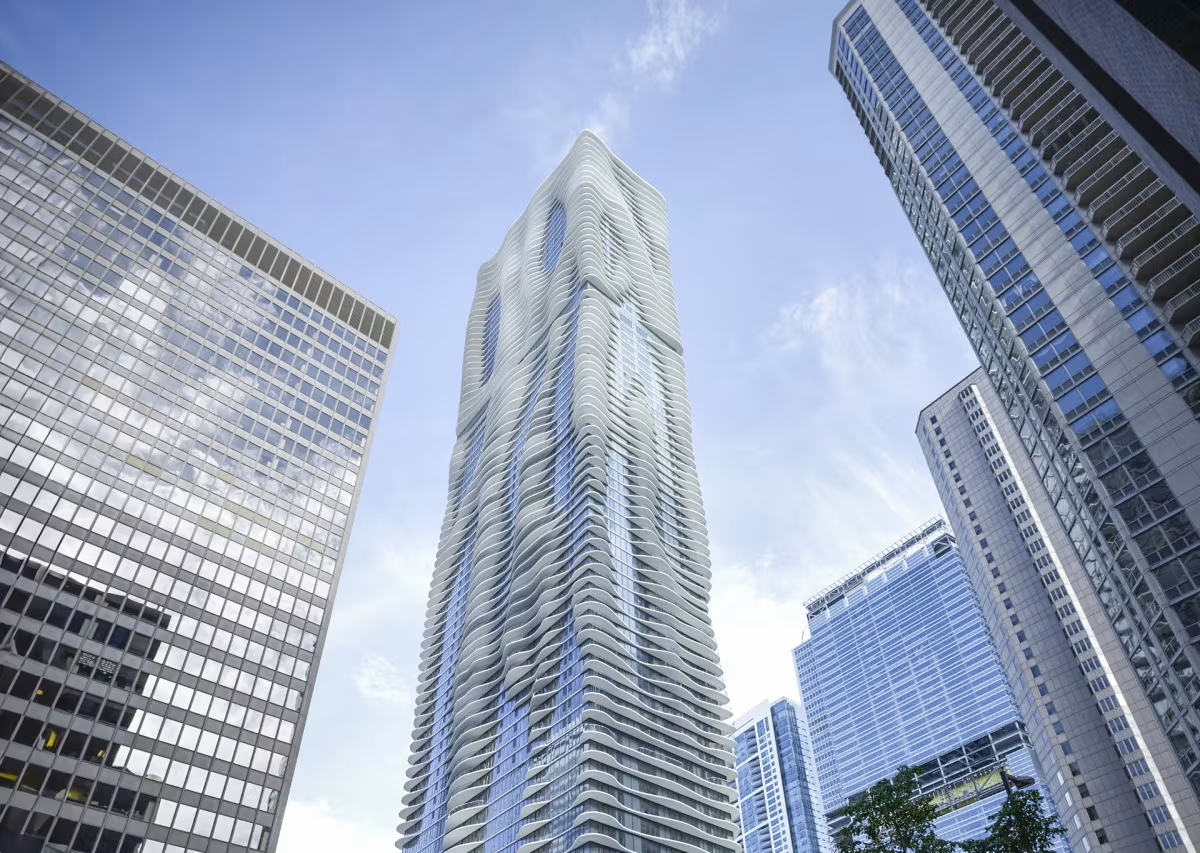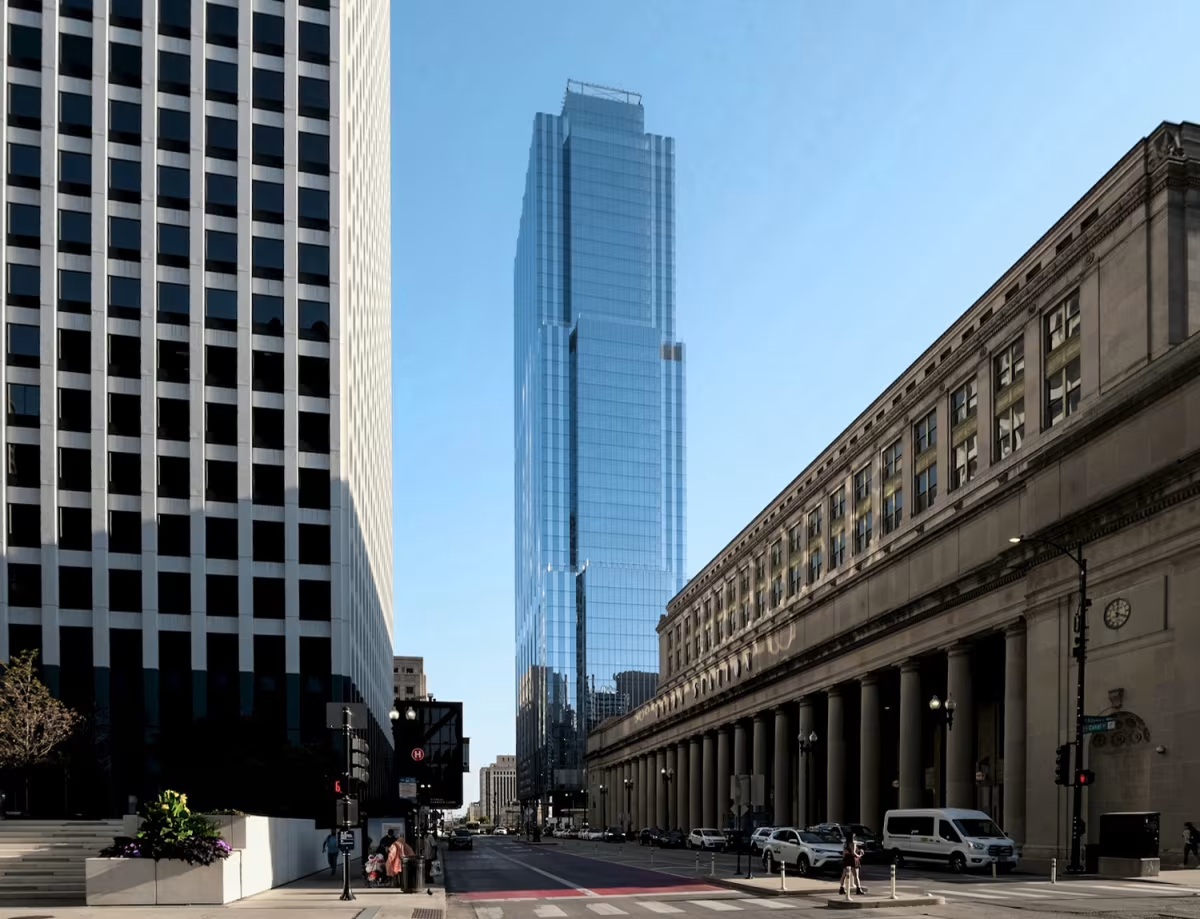Aqua Tower vs BMO Tower


Comparing the Aqua Tower and the BMO Tower is interesting because they both rise in Chicago, IL, yet they were conceived by two different design teams, Studio Gang Architects and Goettsch Partners , and were completed at different points in time. They were finished more than a decade apart.
This contrast within the same city allows us to see how different creative minds interpreted the evolving needs of Chicago across time.
Let's take a closer look!
Height & Size
The Aqua Tower is clearly the larger tower of the two, both in terms of height and number of floors. It rises to 859ft (261.8m) with 82 floors above ground, while the BMO Tower reaches 728ft (222m) with 51 floors above ground.
Aqua Tower also offers more total built-up area, a total fo 1,980,558 sqf (184,000m2), which is about 240,562 sqf (22,349m2) more than what the BMO Tower offers.
Of course, each project may have faced different briefs or regulatory constraints, which we don't really know about and could also explain the outcome.
Architectural Style
Both the Aqua Tower and the BMO Tower were designed in line with the aesthetic conventions of the Contemporary style.
At the time, this style was at the height of its popularity. So both Studio Gang Architects and Goettsch Partners followed what was in many ways expected of them, producing designs that fit comfortably within contemporary architectural norms, rather than breaking with convention.
Uses
The Aqua Tower follows a mixed-use model, combining commercial, residential, hotel and parking. In contrast, the BMO Tower has remained primarily commercial.
The Aqua Tower incorporates a -star hotel with 225 rooms.
The Aqua Tower offers 739 residential units.
Both towers provide significant parking capacity, with Aqua Tower offering 1557 spaces and the BMO Tower offering 324.
Structure & Facade
The two buildings opted for different structural and facade solutions.
The Aqua Tower uses a Framed Tube In Tube system, which combines a strong central core with a perimeter tube of columns, while the BMO Tower uses a Frame system, that relies on a regular grid of columns and beams to sustain its weight.
And when it came to the facade, the Window Wall went with a Window Wall facade, which uses panels fitted between floor slabs, leaving slab edges visible, while the BMO Tower opted for a Curtain Wall facade, that uses a lightweight glass curtain wall hung from the structure.
| Aqua Tower | BMO Tower | |
|---|---|---|
| Studio Gang Architects | Architect | Goettsch Partners |
| 2006 | Construction Started | 2019 |
| 2009 | Year Completed | 2021 |
| Contemporary | Architectural Style | Contemporary |
| Mixed | Current Use | Commercial |
| 82 | Floors Above Ground | 51 |
| 6 | Floors Below Ground | 2 |
| 261.8 m | Height (m) | 222 m |
| 184000 | Built-up Area (m²) | 161651 |
| 176,516 m² | Usable Area (m²) | 140,000 m² |
| Framed Tube In Tube | Structure Type | Frame |
| Reinforced Concrete | Vertical Structure Material | Concrete And Steel |
| Reinforced Concrete | Horizontal Structure Material | Poured Concrete Over Metal Decking |
| No | Facade Structural? | No |
| McHugh Construction | Main Contractor | Clark Construction |
| Magellan Development Group | Developer | Riverside Investment & Development |
| Wolff Landscape Architecture | Landscape Architect | Wolff Landscape Architecture |
| Magnusson Klemencic Associates | Structural Engineer | Magnusson Klemencic Associates |
| IL | State | IL |
| Chicago | City | Chicago |
| 225 N. Columbus Drive | Address | 320 South Canal Street |